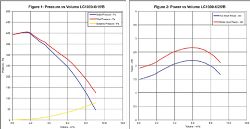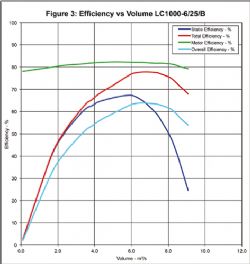The biggest consumer of electricity in the UK is motor-driven systems, with around 22 per cent of industrial motor energy being used by fans. Understandably, this makes fans a prime target for energy savings, says Alan Macklin
The global commitment to reduce energy consumption is being implemented in Europe though the Ecodesign Directive 2009/125/EC. This lays out the framework defining the rules for setting productspecific requirements and legislation on energy efficiency.
The ErP (Energy related Products) Directive includes products that impact on energy consumption such as space heating and cooling, broadening the scope.
Divided into lotsProducts affected have been divided into 'lots', with the formulation of legislation being prioritised based on the biggest impact to reduce energy consumption.
This introduces a number of issues to UK fan users who are used to working in static pressure, fan shaft power and static efficiency (all of which ignores the efficiency of the motor). Fan manufacturers and users will have to consider the overall efficiency based on the electrical input power and consider total pressure for ducted applications. The total pressure is the sum of the static pressure and the dynamic pressure which takes into account the swirl velocity of the air after it leaves the impeller.
The overall efficiency based on motor input power is the product of the motor efficiency and the total efficiency (or static efficiency depending on the measurement category), resulting in a lower overall efficiency figure. This is illustrated graphically in Figures 1, 2 and 3.


From the graphs it can be seen that the maximum overall efficiency is 63.9 per cent at a volume flow rate of 6.69m3/s and a motor input power of 2.64kW. This gives a Fan Motor Efficiency Grade (FMEG) value of N66 and exceeds the ErP 2015 requirements.
ISO 12759 standard provides an efficiency banding classification system for fans which provides the legislators and regulatory bodies with the means to review and increase the minimum fan efficiency levels in line with advances in available technology.
Changing slope
The FMEG is represented by a graph with a compound slope initially from 125W to 10kW then changing slope from 10kW to 500kW to cater for the inherent higher efficiencies achievable with larger fans. Plotting the peak efficiency points for a standard range of axial flow fans with IE1 motors available on the market in 2010, the legislative implications for 2013 and 2015 become obvious (see Figure 4).

Around 70 per cent of the fans included in Figure 4 were acceptable in 2010, but will have to be withdrawn from the market by 2015. The introduction of IE2 and IE3 motors will help to improve the overall fan efficiency for fans fitted with three phase motors which are currently border line.
The traditional single-phase, low efficiency voltage speed controllable motors will inevitably be replaced by high efficiency EC motors.
This is forcing major investment by fan manufacturers in product development and testing to produce more efficient impellers and technologically advanced fan designs in order to stay in business.
Higher manufacturing costs
The fan unit price will consequently increase to pay for the development and higher manufacturing costs. However, the end user will derive benefit in terms of reduced running costs and the populace in general will reap the benefit of higher efficiency fans helping to conserve the finite amount of available energy.
// The author is group technical manager at Elta Group //